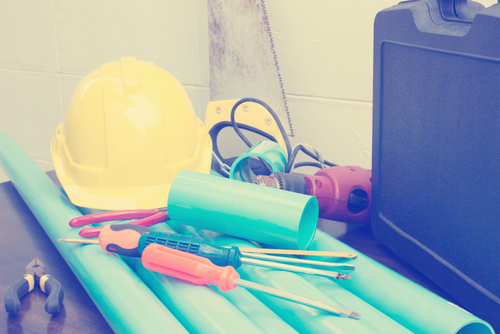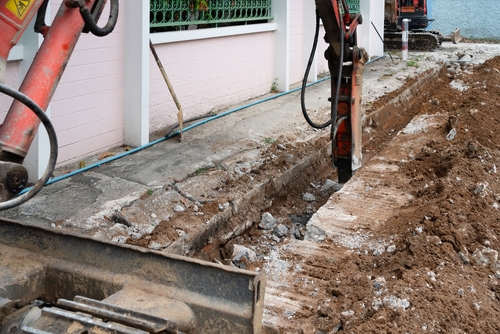Sewer Line Replacement Process: What to Expect
Sewer line issues can cause significant disruptions and headaches for homeowners and businesses alike. When faced with deterioration or damage, replacement becomes a necessary solution to restore functionality and prevent further problems.
Opting for sewer line replacement experts in Riverside is crucial and the process involves several crucial steps and considerations to ensure a successful and efficient outcome. From initial assessment and diagnosis to excavation and installation, understanding what to expect during sewer line replacement is essential for minimizing your inconvenience. In this article, we’ll outline the key stages and provide insights into the process.
How do you replace a sewer line?
It’s a complex task that requires professional expertise and specialized equipment and involves several key steps to ensure the line is safely removed and a new one is installed correctly:
Initial assessment and planning
 The first step is to conduct a thorough assessment of the existing system. A professional will inspect it using video cameras to identify the location and extent of damage or blockage.
The first step is to conduct a thorough assessment of the existing system. A professional will inspect it using video cameras to identify the location and extent of damage or blockage.
This assessment helps determine whether a complete replacement is necessary or if repairs can be made in specific sections. Additionally, the contractor will evaluate accessibility and plan the most appropriate replacement method.
Obtaining permits
Before any work can begin, it’s crucial to obtain the necessary permits from the local authorities. Replacement typically requires permits to ensure compliance with building codes and regulations. A reputable contractor will handle the application process on behalf of the homeowner, ensuring all legal requirements are met.
Excavation
Once the assessment and permit acquisition are complete, the excavation process begins. The area surrounding the sewer line is excavated to expose the damaged or deteriorated pipe. This can involve digging trenches manually or using machinery, depending on the depth and accessibility. It’s essential to take care during excavation to avoid damage to any nearby utility lines or structures.
Pipe removal
After the excavation is complete, the damaged line is removed. Since the old pipe can be made of various materials, such as cast iron, clay, or polyvinyl chloride (PVC), the method of removal depends on the material and accessibility.
In some cases, the pipe may be cut into sections and removed manually. In other instances, professionals can employ mechanical tools like pipe-bursting or trenchless technology, which allows for the new pipe to be pulled through the existing line while breaking apart the old pipe.
Installation of new pipe
With the old pipe removed, the next step is to install the new sewer line. The type of pipe used for replacement can vary based on factors like local building codes and the contractor’s recommendation. Commonly used materials include PVC, HDPE (high-density polyethylene), or ABS (acrylonitrile butadiene styrene). The new pipe is carefully laid in the trench, ensuring proper alignment and grade to facilitate the flow of wastewater. Couplings or joints are used to connect the pipe sections securely.
Connection and testing
Once the new line is in place, it’s connected to the existing plumbing system. This involves attaching the new pipe to the drain lines leading from toilets, sinks, and other fixtures. The connections are sealed to prevent any leaks or sewage odors. After the connections are made, professionals will thoroughly test the sewer system to ensure proper functionality.
This can involve conducting water flow tests and pressure checks to confirm that the new line is working as intended.
Backfilling and site restoration
Once the process is complete and has passed the necessary inspections, the excavated area is backfilled with soil. The backfilling process involves compacting the soil in layers to provide stability and support for the new pipe. The surface is then restored to its original condition as much as possible, which may involve reseeding or re-paving the area.
Who provides comprehensive sewer line replacement in Riverside?
 If you’re wondering about the potential issues you may encounter when replacing sewer lines in older homes or about some typical causes of sewer line damage, feel free to reach out to OneStop Plumbers. Our committed team will be more than happy to answer any questions you may have and provide you with premium-quality service to ensure your safety and complete satisfaction. Whether you’re close to the Riverside Art Museum or in another nearby area, you can count on our assistance. Get in touch with us today!
If you’re wondering about the potential issues you may encounter when replacing sewer lines in older homes or about some typical causes of sewer line damage, feel free to reach out to OneStop Plumbers. Our committed team will be more than happy to answer any questions you may have and provide you with premium-quality service to ensure your safety and complete satisfaction. Whether you’re close to the Riverside Art Museum or in another nearby area, you can count on our assistance. Get in touch with us today!
